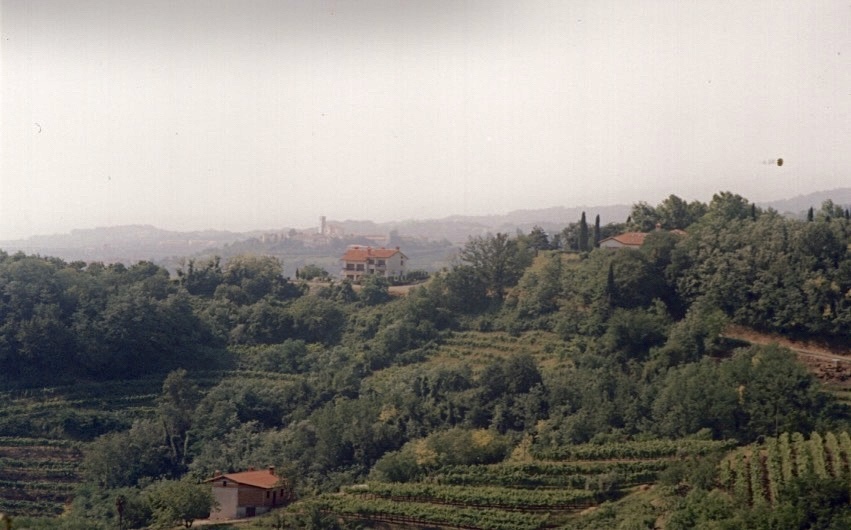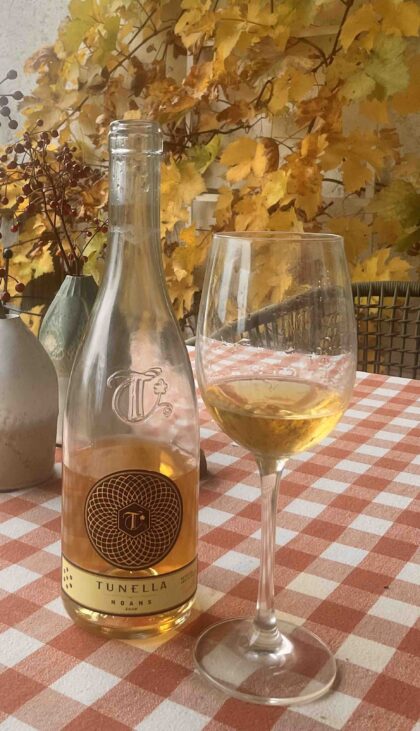 The Friulian DOC Colli orientale, like the DOC Collio, only came into focus in the 1970s, when both entered the wine market with large quantities of cool-fermented, fresh, fruity and aromatic white wines. This was mainly because the wines were made from internationally known varieties, especially Pinot Grigio, Chardonnay and Sauvignon Blanc. In the 1980s, international red wine varieties such as Merlot, Cabernet Sauvignon, Cabernet Franc and Pinot Noir were increasingly planted in order to better position themselves internationally in the red wine sector.
The Friulian DOC Colli orientale, like the DOC Collio, only came into focus in the 1970s, when both entered the wine market with large quantities of cool-fermented, fresh, fruity and aromatic white wines. This was mainly because the wines were made from internationally known varieties, especially Pinot Grigio, Chardonnay and Sauvignon Blanc. In the 1980s, international red wine varieties such as Merlot, Cabernet Sauvignon, Cabernet Franc and Pinot Noir were increasingly planted in order to better position themselves internationally in the red wine sector.
The Collli Orientale have always had many native grape varieties. After a period in which international grape varieties were in the foreground in Friuli, the indigenous white grape varieties such as Friulano, Ribolla Gialla, Malvasia Istriana, Verduzzo Friulano and Picolit as well as the red varieties Refosco dal Peduncolo rosso, Schioppettino and Pignolo are increasingly being found again. Verduzzo and Picolit play the main role in the sweet wines. There are also sweet wines of the Passito type, such as the Noans 2020 from the Tunella winery that we tasted, which is made from dried grapes of the Riesling, Gewürztraminer and Sauvignon blanc varieties.

The Tunella winery, located near the Slovenian border in Premariacco in Friuli, cultivates around 70 hectares of vineyards on calcareous clay and sandstone soils. 70% of them are planted with white grape varieties, the rest with the already mentioned indigenous red grape varieties as well as the international varieties Pinot Noir, Merlot, Cabernet Sauvignon and Cabernet Franc.
For the Noans, the grapes are harvested by hand, then placed in small wooden boxes and then dried in a well-ventilated room for around 80 days. Once the desired degree of dryness has been achieved, the grapes are destemmed, crushed, pressed and the resulting must is fermented at very cool temperatures of 8 – 10° C. After several bâttonages following fermentation, the wine is then bottled in February.
Noans 2020, Tunella (Tasted wines)
Golden yellow in the glass. On the nose, delicate botrytis spice, dried fruit and a hint of very ripe pineapple. On the palate, it has a dense, well-balanced sweetness, pleasant acidity, concentrated, with very dark spice, nutmeg, dried apricot and delicate medicinal notes. Slightly saline notes that become increasingly prominent towards the end of the very long, dense finish. Excellent wine that is best enjoyed on its own.